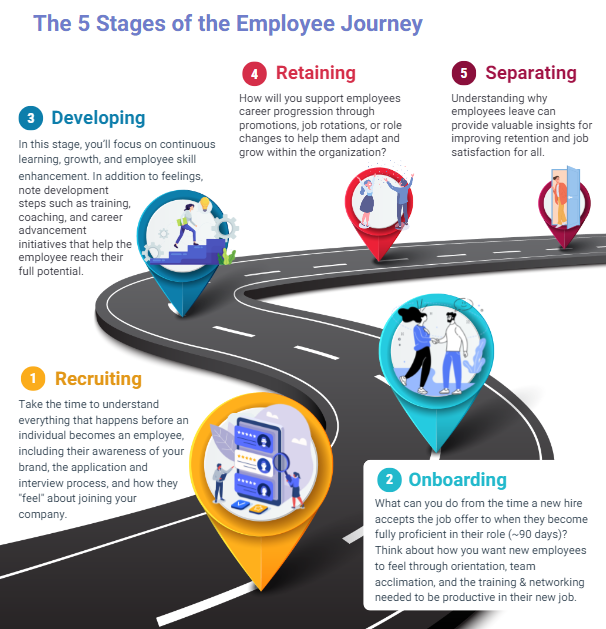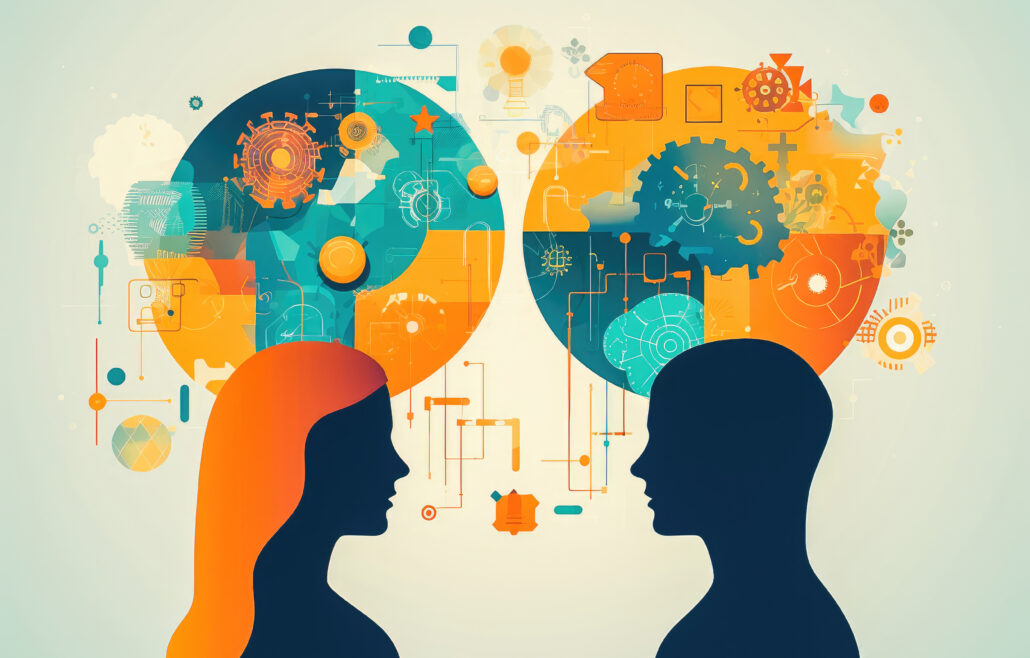It can be disorienting these days to think about something – and suddenly – that “thing” pops up on your TV, phone, or browser. How did Amazon know you needed coffee? Why did Netflix open with a preview for a new season of a show you’ve been waiting for?
Advertisers know so much about you by using data and predictive analytics based on detailed customer journey maps designed to funnel you to take a specific action … responses you may not have planned to take.
So, what if you could use the same strategies to guide your learners to the right training at the right time to increase employee satisfaction, engagement, and productivity? Creating and using an employee journey map can help you better understand employee needs, and reveal gaps and critical milestones that allow you to measure the effectiveness of your training over time.
What is an Employee Journey Map?
An employee journey map is a visual representation of the experiences, key stages, and emotional states an employee goes through during their time with an organization.
By creating an employee journey map, you can better understand your employees’ experiences at crucial stages in their journey and identify opportunities to improve the learning experience at each stage.

Download the full Create an Employee Journey Map for Learners Infographic
Here are the 5 common stages of an employee journey.
- Recruiting. This covers everything before an individual becomes an employee, including their awareness of your brand, and how they apply and interview for job openings. You want to note the “feelings” a potential employee experiences at all stages, ending with a job offer or rejection.
- Onboarding. This is when a new hire accepts the job offer and becomes fully proficient in their role – which can be 90 days or longer. Again, how do you want new employees to feel through orientation, team acclimation, and the training and networking needed to be productive in their new job?
- In the Developing stage, you’ll focus on continuous learning, growth, and employee skill enhancement. In addition to feelings, note development steps such as training, coaching, and career advancement initiatives that help employees reach their full potential.
- Retaining involves keeping employees and supporting their career progression within the organization. How will you support employees through promotions, job rotations, or role changes to help them adapt and grow within the organization? You’ll want to understand the time it takes to acquire organizational knowledge and turnover costs, to create the right retention policies at your company.
- Finally, Separating involves the employee leaving the company for retirement, a new job, or any other reason. Understanding why employees leave can provide valuable insights for improving retention and job satisfaction for new hires and those remaining.
Remember, in each stage, you’ll want to understand the employee’s goals, needs, pain points, and feelings. It’s also important to be aware of the organization’s interactions with different people and processes throughout each stage. And make sure you know who from your organization is in charge of which processes, and where the handoff points occur – so activities run smoothly and steps don’t get missed. Creating an employee journey map is useful for improving the learning experience, aligning learning initiatives with employee needs, and enhancing engagement and motivation.
What are the first steps you can take to create an employee journey map at your organization?
